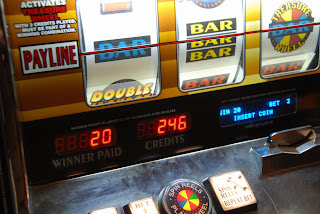


We'll be back bigger & better than ever for the New Year.
Happy Holidays to you all!
 The Masters are coming to a casino near you or so I assume based on the 3 newest filings from High 5 Games for gaming machines:
The Masters are coming to a casino near you or so I assume based on the 3 newest filings from High 5 Games for gaming machines: 
 February's anti-eating face mask - uhm, I have no words for this one.
February's anti-eating face mask - uhm, I have no words for this one.
 PATEX did a fantastic job with this calendar...hmm, perhaps a bizarre trademark calendar would be just as neat?
PATEX did a fantastic job with this calendar...hmm, perhaps a bizarre trademark calendar would be just as neat? Picking up from yesterday's post, let's get further into the additional forms attached to filing an Intent to Use application.
Picking up from yesterday's post, let's get further into the additional forms attached to filing an Intent to Use application.



 Trademarks
Trademarks
 Looks like we'll have yet another expansion pack to look forward to - The Sims Carnival.
Looks like we'll have yet another expansion pack to look forward to - The Sims Carnival. There have been a number of changes at TradeMark Express lately that I wanted to take this opportunity to detail them here for our blog readers.
There have been a number of changes at TradeMark Express lately that I wanted to take this opportunity to detail them here for our blog readers.
$285 per month for two months = $570
$195 per month for three months = $585
What is a Trademark Conflict?
What is a Trademark Similarity?
Comprehensive trademark research consists of several layers:
 "The United States Patent and Trademark Office (USPTO) will host a showcase for trademarks at its Alexandria, Virginia headquarters April 10-12, 2008. The three day event is designed to engage the public’s interest and educate consumers about the vital role trademarks play in the global economy. Any company with a registered trademark may apply to exhibit. The deadline for applications is December 15, 2007."
"The United States Patent and Trademark Office (USPTO) will host a showcase for trademarks at its Alexandria, Virginia headquarters April 10-12, 2008. The three day event is designed to engage the public’s interest and educate consumers about the vital role trademarks play in the global economy. Any company with a registered trademark may apply to exhibit. The deadline for applications is December 15, 2007."  Check out PC Magazine's Top 100 Undiscovered Web Sites. It's chock full of really handy sites, some you may even use FOR work.
Check out PC Magazine's Top 100 Undiscovered Web Sites. It's chock full of really handy sites, some you may even use FOR work.
The process for filing for a trademark for a domain name is similar to any other name in terms of comprehensive research and analysis being a necessity.
There is one big caveat when it comes to trademarking domain names and it has to do with usage of the domain name.
Source Welcome to the first day of class! Before we get into the nitty gritty of trademarks, let’s go back to the beginning. And the be...